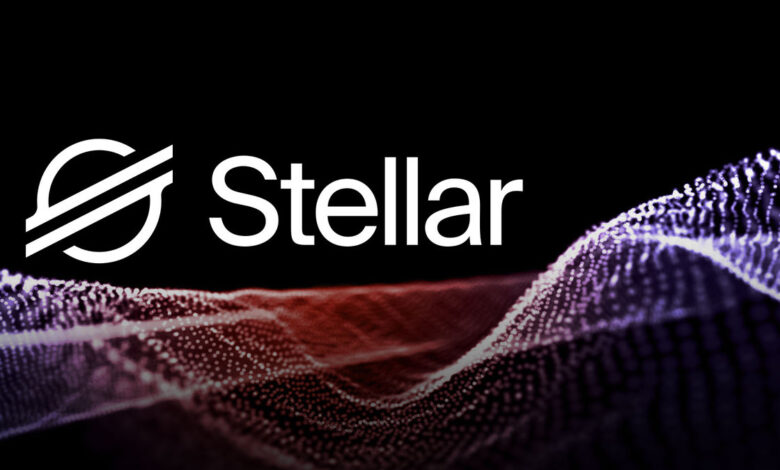Stellar Network Integration for Banks Complete Guide to Blockchain

The financial services industry stands at a pivotal moment where traditional banking infrastructures are being challenged by innovative blockchain technologies. Stellar network integration for banks represents one of the most significant developments in modern financial technology, offering institutions a pathway to revolutionize their payment systems, reduce operational costs, and enhance customer experiences.
The Stellar blockchain network has emerged as a leading solution for banks seeking to modernize their cross-border payment capabilities. This open-source, decentralized platform enables financial institutions to process international transactions in seconds rather than days, while dramatically reducing fees compared to traditional correspondent banking networks. As banks worldwide face increasing pressure to provide faster, cheaper, and more transparent services, stellar network integration offers a compelling solution that addresses these challenges head-on.
Understanding Stellar Network Architecture for Banking Applications
What Makes Stellar Ideal for Banking Integration
The Stellar network operates on a unique consensus mechanism called the Federated Byzantine Agreement (FBA), which sets it apart from other blockchain platforms. Unlike Bitcoin’s energy-intensive mining process, Stellar’s consensus protocol allows for rapid transaction processing while maintaining security and decentralization. This architecture makes it particularly suitable for banking applications where speed, reliability, and regulatory compliance are paramount.
Banks implementing stellar network integration benefit from the platform’s ability to handle thousands of transactions per second with settlement times of 3-5 seconds. The network’s native cryptocurrency, Lumens (XLM), serves as a bridge currency, facilitating seamless exchanges between different fiat currencies and digital assets.
Technical Infrastructure Requirements
Financial institutions considering stellar network integration must evaluate their existing technical infrastructure and prepare for the necessary upgrades. The integration process typically involves establishing secure connections to Stellar’s network of validators, implementing API endpoints for transaction processing, and ensuring compliance with existing banking security protocols.
The Stellar Development Foundation provides comprehensive documentation and software development kits (SDKs) that simplify the integration process for banks. These tools enable institutions to build custom applications while leveraging Stellar’s core functionality for payments, asset tokenization, and smart contracts.
Key Benefits of Stellar Network Integration for Banks
Cost Reduction and Operational Efficiency
Traditional cross-border payments often involve multiple intermediary banks, each charging fees and adding processing time. Stellar network integration eliminates many of these intermediaries, allowing banks to reduce transaction costs by up to 90% compared to conventional wire transfer systems.
The operational efficiency gains extend beyond cost savings. Banks can automate many processes that previously required manual intervention, reducing the risk of human error and improving overall transaction reliability. This automation is particularly valuable for high-volume payment processing and recurring international transfers.
Enhanced Speed and Settlement Times
One of the most compelling advantages of stellar network integration is the dramatic improvement in transaction speed. While traditional international transfers can take 3-7 business days to complete, Stellar-based transactions settle within seconds. This speed improvement significantly enhances customer satisfaction and enables banks to offer more competitive services.
The rapid settlement capability also reduces counterparty risk and improves cash flow management for both banks and their customers. Financial institutions can offer real-time payment services that compete directly with emerging fintech solutions.
Improved Transparency and Auditability
The blockchain foundation of Stellar provides an immutable ledger of all transactions, offering unprecedented transparency for banking operations. This transparency enhances regulatory compliance and simplifies audit processes, as all transaction data is cryptographically secured and permanently recorded.
Banks benefit from real-time tracking capabilities that allow them to monitor transaction status throughout the entire payment process. This visibility extends to customers, who can receive instant updates on their cross-border transfers.
Real World Implementation Banks Using Stellar Network

Major Banking Partnerships and Success Stories
Several prominent financial institutions have successfully implemented stellar network integration, demonstrating the platform’s viability for enterprise banking applications. ICICI Bank, one of India’s largest private banks, has utilized Stellar for both domestic and international payment processing, launching pilot programs that showcase significant improvements in transaction speed and cost efficiency.
ICICI Bank’s Head of blockchain initiative, Raj Chowdhury, noted that Stellar “technology is enabling us to conduct business a lot quicker and cheaper, with lower error rates and lower vulnerability to cyber threats.” The collaboration between IBM and Stellar resulted in the creation of IBM World Wire, a blockchain-based payment network that connected multiple international banks. This partnership demonstrated the scalability potential of stellar network integration for large-scale banking operations.
Regional Payment Networks and Corridors
Stellar’s network has facilitated the creation of regional payment corridors that connect banks across different countries and currencies. The network has expanded to include partnerships with Coins.ph in the Philippines, African mobile payments firm Flutterwave, and French remittances company Tempo Money Transfer.
These regional implementations showcase how stellar network integration can address specific market needs while maintaining interoperability with the global financial system. Banks can participate in these corridors to access new markets and serve previously underbanked populations.
Technical Implementation Guide for Banking Integration
API Integration and Development Framework
The technical implementation of stellar network integration begins with API integration using Stellar’s Horizon server. Banks must establish secure connections and implement proper authentication mechanisms to ensure transaction security. The integration process involves several key components:
Security Protocols and Compliance Considerations
Banking institutions must implement robust security measures when integrating with the Stellar network. This includes multi-signature wallet configurations, cold storage solutions for asset management, and comprehensive audit trails for regulatory compliance.
The security framework should encompass both technical safeguards and operational procedures that align with existing banking security standards. Regular security assessments and penetration testing ensure the integrity of the integrated system.
Testing and Deployment Strategies
Banks should adopt a phased approach to stellar network integration, beginning with pilot programs and gradually scaling to full production deployment. The testing phase should include stress testing under various load conditions and comprehensive security validation.
Sandbox environments provided by the Stellar Development Foundation allow banks to test their integration without risking real assets or affecting production systems. This testing capability is crucial for identifying potential issues before launching customer-facing services.
Regulatory Compliance and Risk Management
Navigating Financial Regulations
Stellar network integration must comply with existing financial regulations in each jurisdiction where banks operate. This includes anti-money laundering (AML) requirements, know-your-customer (KYC) protocols, and cross-border payment regulations.
Banks must work closely with regulatory bodies to ensure their Stellar-based services meet all compliance requirements. The transparency provided by blockchain technology can simplify compliance processes by providing comprehensive transaction records and audit trails.
Risk Assessment and Mitigation Strategies
Financial institutions must conduct thorough risk assessments before implementing stellar network integration. Key risk categories include operational risk, technology risk, regulatory risk, and market risk. Each category requires specific mitigation strategies and ongoing monitoring procedures.
The decentralized nature of the Stellar network provides inherent risk distribution benefits, as there is no single point of failure that could disrupt the entire system. However, banks must still implement backup procedures and disaster recovery plans.
Cost Benefit Analysis of Stellar Integration

Implementation Costs and Resource Requirements
The initial investment for stellar network integration varies depending on the bank’s size, existing infrastructure, and integration scope. Major cost components include software development, security implementation, staff training, and ongoing maintenance.
Banks should consider both direct costs (development, infrastructure) and indirect costs (staff time, opportunity costs) when evaluating the financial impact of integration. The relatively modest implementation costs compared to traditional payment system upgrades make Stellar an attractive option for many institutions.
Return on Investment Calculations
The ROI for stellar network integration typically becomes positive within 12-24 months due to significant operational cost savings and new revenue opportunities. Banks can reduce correspondent banking fees, minimize settlement delays, and offer premium services to customers seeking faster international transfers.
Revenue opportunities include transaction fee income, foreign exchange spreads, and premium service offerings enabled by the enhanced capabilities of the Stellar network. These revenue streams often exceed the initial implementation investment within the first year of operation.
Future Trends and Innovations in Banking Integration
Central Bank Digital Currencies (CBDCs) and Stellar
Many central banks are exploring digital currency implementations that could integrate with existing blockchain networks like Stellar. This trend presents significant opportunities for banks that have already implemented stellar network integration, as they would be well-positioned to support CBDC transactions and services.
The interoperability features of the Stellar network make it an ideal platform for connecting different CBDC implementations and facilitating cross-border digital currency transactions between nations.
Smart Contracts and Automated Banking Services
Stellar’s smart contract capabilities, known as Stellar Smart Contracts (SSC), enable banks to automate complex financial processes and create programmable money solutions. These capabilities support advanced banking services such as escrow accounts, automated loan disbursements, and conditional payments.
The integration of smart contracts with traditional banking services opens new possibilities for product innovation and operational efficiency improvements. Banks can develop customized solutions that address specific customer needs while maintaining regulatory compliance.
Tokenization of Banking Assets
The asset tokenization capabilities of the Stellar network enable banks to create digital representations of traditional financial instruments. This includes tokenized deposits, bonds, and other banking products that can be traded and transferred with greater efficiency than traditional assets.
Asset tokenization represents a significant opportunity for banks to expand their service offerings and create new revenue streams. The transparent and secure nature of blockchain-based tokens provides enhanced security and auditability compared to traditional asset management systems.
Integration Challenges and Solutions
Technical Integration Hurdles
Banks face several technical challenges when implementing stellar network integration, including legacy system compatibility, data migration, and staff training requirements. These challenges require careful planning and phased implementation approaches to minimize disruption to existing operations.
Legacy banking systems often require significant modifications or wrapper solutions to interface effectively with blockchain networks. Banks must invest in middleware solutions that bridge the gap between traditional banking infrastructure and modern blockchain technology.
Organizational Change Management
The implementation of stellar network integration requires significant organizational change management to ensure successful adoption. This includes staff training, process reengineering, and cultural adaptation to new technology paradigms.
Banks should establish dedicated blockchain teams and provide comprehensive training programs to ensure staff members understand the new technology and its implications for daily operations. Change management strategies should address both technical and cultural aspects of the transformation.
Best Practices for Successful Implementation
Project Planning and Timeline Management
Successful stellar network integration requires detailed project planning with realistic timelines and clear milestones. Banks should allocate adequate resources for each phase of implementation and build in contingency time for unexpected challenges.
The implementation timeline typically spans 6-18 months, depending on the scope and complexity of the integration. Banks should prioritize critical functionality in early phases while planning for gradual expansion of capabilities over time.
Vendor Selection and Partnership Strategy
Banks should carefully evaluate technology vendors and potential partners when planning stellar network integration. Key selection criteria include technical expertise, regulatory compliance experience, ongoing support capabilities, and alignment with the bank’s strategic objectives.
Strategic partnerships with established blockchain technology providers can accelerate implementation timelines and reduce technical risks. These partnerships often provide access to specialized expertise and proven implementation methodologies.
Performance Monitoring and Optimization
Ongoing performance monitoring is essential for maintaining optimal stellar network integration performance. Banks should implement comprehensive monitoring systems that track transaction volumes, processing times, error rates, and customer satisfaction metrics.
Regular performance optimization helps ensure the integrated system continues to meet evolving business requirements and customer expectations. This includes capacity planning, security updates, and feature enhancements based on usage patterns and feedback.
Customer Experience and Service Innovation
Enhanced Digital Banking Services
Stellar network integration enables banks to offer enhanced digital banking services that meet evolving customer expectations for speed, transparency, and cost-effectiveness. These services include real-time international transfers, multi-currency accounts, and innovative payment solutions.
The improved customer experience translates directly into competitive advantages and customer retention benefits. Banks can differentiate themselves in the marketplace by offering superior cross-border payment services powered by blockchain technology.
New Product Development Opportunities
The capabilities provided by stellar network integration create opportunities for banks to develop entirely new product categories. These include cryptocurrency services, digital asset custody, and blockchain-based trade finance solutions. Innovation in product development helps banks capture new market segments and revenue opportunities while positioning themselves as technology leaders in the financial services industry.
Security Considerations and Cyber Risk Management
Blockchain Security Best Practices
Banks implementing stellar network integration must adopt blockchain-specific security best practices to protect customer assets and maintain system integrity. This includes secure key management, multi-signature implementations, and comprehensive access controls.
The security framework should encompass both technical security measures and operational security procedures that align with banking industry standards. Regular security audits and penetration testing help identify and address potential vulnerabilities.
Incident Response and Recovery Procedures
Banks must develop comprehensive incident response procedures specifically tailored to blockchain-based systems. These procedures should address various scenarios, including network disruptions, security breaches, and operational failures.
Recovery procedures must ensure business continuity while maintaining the integrity of blockchain-based transactions and records. Banks should implement backup systems and alternative processing capabilities to minimize service disruptions.
Global Market Impact and Industry Transformation
Competitive Landscape Changes
The adoption of stellar network integration is reshaping the competitive landscape in banking, as institutions that embrace blockchain technology gain significant advantages over traditional competitors. Early adopters benefit from lower operational costs, improved service quality, and enhanced market positioning.
Banks that delay blockchain integration risk falling behind competitors and losing market share to more innovative financial service providers. The transformation is particularly evident in cross-border payments and international banking services.
Regulatory Evolution and Industry Standards
The growing adoption of blockchain technology in banking is driving regulatory evolution and the development of new industry standards. Banks implementing stellar network integration must stay current with evolving regulations and contribute to the development of best practices. Industry collaboration and standardization efforts help ensure interoperability between different blockchain implementations and maintain consumer protection standards across the financial services sector.
Also Read: Stellar Cross Border Payments vs SWIFT Speed Cost & Future Comparison 2025
Conclusion
The financial services industry stands at a transformative crossroads where traditional banking methods are giving way to innovative blockchain solutions. Stellar network integration for banks represents more than just a technological upgrade—it’s a strategic imperative for institutions seeking to remain competitive in an increasingly digital financial landscape.
Banks that embrace stellar network integration position themselves to capture significant operational efficiencies, cost reductions, and customer satisfaction improvements. The platform’s proven track record with major financial institutions demonstrates its viability for enterprise-scale banking operations, while its ongoing development ensures continued innovation and capability expansion.
The compelling business case for integration combines immediate operational benefits with long-term strategic advantages. Banks can reduce cross-border payment costs by up to 90%, eliminate settlement delays, and offer customers real-time transaction tracking and confirmation. These improvements translate directly into competitive advantages and enhanced profitability.




